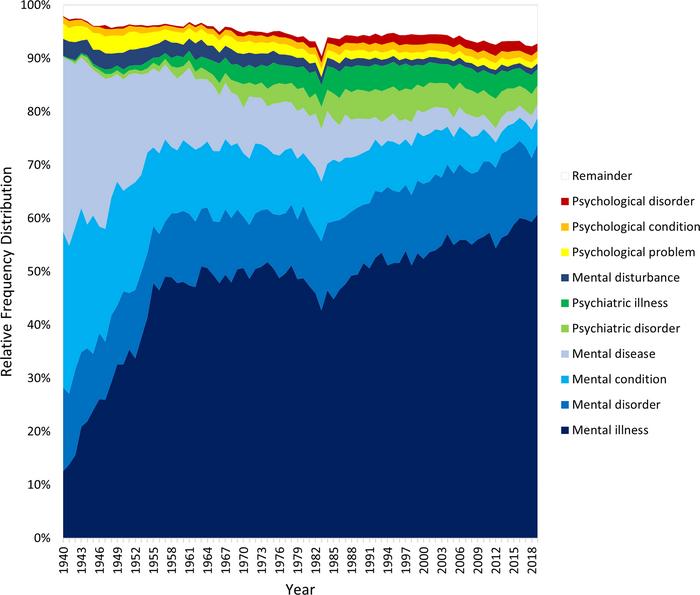Gene Expression Tool Predicts Bladder Cancer Recurrence
A groundbreaking study published in the latest issue of BMC Cancer unveils a novel gene expression-based risk stratification tool that promises to revolutionize the prediction of recurrence in Non-Muscle Invasive Bladder Cancer (NMIBC). This innovation harnesses the power of transcriptomics to offer an unprecedented level of precision in identifying patients at high risk for early […]


A groundbreaking study published in the latest issue of BMC Cancer unveils a novel gene expression-based risk stratification tool that promises to revolutionize the prediction of recurrence in Non-Muscle Invasive Bladder Cancer (NMIBC). This innovation harnesses the power of transcriptomics to offer an unprecedented level of precision in identifying patients at high risk for early recurrence, addressing a critical unmet need in the management of this heterogeneous malignancy.
Bladder cancer presents a unique clinical challenge due to its biological diversity and variable clinical outcomes. Among its subtypes, NMIBC is predominantly characterized by its indolent behavior with slow progression. However, a significant subset of these tumors eventually advance to muscle-invasive disease, a stage linked with markedly worse prognosis and increased metastatic potential. Currently, clinicians are limited to traditional risk models such as the European Organisation for Research and Treatment of Cancer (EORTC) scoring system, which lacks sufficient accuracy, leading to suboptimal patient stratification and management decisions.
The newly developed mRNA expression-based scoring system emerges from comprehensive transcriptomic profiling of primary tumor samples collected between 2018 and 2022. By evaluating the expression dynamics of 435 genes differentially expressed in NMIBC tumors prone to early recurrence, this tool transcends the predictive limitations of conventional clinical and pathological parameters. This large gene panel reflects the underlying molecular complexity of bladder cancer biology, enabling a refined prognostic stratification that was previously unattainable.
In this retrospective analysis involving 25 NMIBC patients, the mRNA risk score demonstrated remarkable predictive accuracy. Through rigorous statistical validation involving 10,000 resampling iterations, the tool achieved a median accuracy rate of 90% in forecasting early tumor recurrence. This performance significantly surpassed that of existing clinical risk classifiers, positioning the novel gene signature as a powerful adjunctive diagnostic asset in clinical oncology.
The practical implications of this research are profound. NMIBC management frequently entails repeated invasive surveillance procedures and adjunctive treatments following Transurethral Resection of Bladder Tumor (TURBT), which carry substantial morbidity and healthcare costs. By enabling precise identification of patients at genuine risk of progression, the mRNA score can streamline follow-up protocols, minimize unnecessary interventions, and personalize therapeutic strategies, thereby optimizing patient outcomes and resource utilization.
A particularly compelling aspect of the study was the Kaplan–Meier survival analysis comparing recurrence-free survival between high and low mRNA risk groups. The findings revealed sharply divergent survival curves with a Bonferroni-adjusted p-value less than 0.0001, underscoring the statistical robustness and clinical relevance of this molecular stratification approach. This level of discrimination is critical for refining clinical decision-making in what has traditionally been a domain fraught with uncertainty.
Underlying this technological leap is the elucidation of molecular pathways implicated in NMIBC recurrence, gleaned from the comprehensive differentially expressed gene set. These pathways provide insight into tumor biology, potentially unveiling novel therapeutic targets and paving the way for integrative precision oncology approaches that combine molecular diagnostics with tailored interventions.
The study’s retrospective design lays a foundational proof-of-concept, though prospective clinical validation in larger cohorts will be essential to fully cement the utility of this mRNA-based risk tool. Nonetheless, the initial results are undeniably promising and suggest that molecular risk stratification might soon become standard of care in NMIBC patient management algorithms.
Importantly, the tool’s reliance on transcriptional profiling reflects the broader oncology paradigm shift toward ‘omics’-based personalized medicine. By integrating multi-dimensional genomic data with clinical attributes, such approaches aim to overcome the one-size-fits-all limitations of traditional models, ushering in an era of bespoke cancer care.
Technical challenges remain in translating such molecular tools from bench to bedside. These include ensuring assay reproducibility, standardizing protocols across institutions, and integrating risk scores into clinical workflows. However, the study’s demonstrated accuracy and potential clinical impact make overcoming these hurdles an imperative pursuit.
The economic ramifications of this innovation are equally noteworthy. NMIBC surveillance burdens healthcare systems globally due to frequent cystoscopies and monitoring. By enabling risk-adjusted surveillance, the gene expression score may significantly reduce procedural costs while preserving, or even enhancing, patient safety.
Moreover, reducing overtreatment and overt surveillance carries substantial patient quality-of-life benefits. By sparing low-risk individuals from unnecessary invasive follow-ups and enabling focused attention on high-risk patients, the mRNA score exemplifies patient-centric care enhancements driven by molecular innovation.
The publication of these findings in BMC Cancer, a reputed oncology journal, ensures wide dissemination within the scientific and clinical community, fostering further research and potential collaborations aimed at refining NMIBC management strategies.
Looking forward, integrating the gene expression score with other emerging biomarkers such as circulating tumor DNA or proteomics data could further augment predictive power, facilitating a holistic approach to bladder cancer risk assessment.
In summary, this pioneering research presents a compelling case for reshaping NMIBC follow-up paradigms. The gene expression-based risk score offers a quantum leap in prediction accuracy, with tangible benefits spanning clinical practice, patient well-being, and healthcare economics. As molecular diagnostics continue to mature, their integration into uro-oncology heralds a new frontier in cancer precision medicine.
Subject of Research: Non-Muscle Invasive Bladder Cancer (NMIBC) recurrence prediction through transcriptomics-based gene expression profiling.
Article Title: Novel Gene expression-based Risk Stratification tool predicts recurrence in Non-muscle invasive Bladder cancer.
Article References:
N, S., PS, H., P, R. et al. Novel Gene expression-based Risk Stratification tool predicts recurrence in Non-muscle invasive Bladder cancer. BMC Cancer 25, 916 (2025). https://doi.org/10.1186/s12885-025-14273-y
Image Credits: Scienmag.com
DOI: https://doi.org/10.1186/s12885-025-14273-y
Tags: bladder cancer recurrence predictioncomprehensive transcriptomic analysisearly recurrence in bladder cancerEORTC scoring system limitationsgene expression risk stratificationmRNA expression scoring systemmuscle-invasive bladder cancer prognosisNMIBC tumor profilingNon-Muscle Invasive Bladder Cancerprecision medicine in oncologytranscriptomics in cancertumor biological diversity
What's Your Reaction?


































